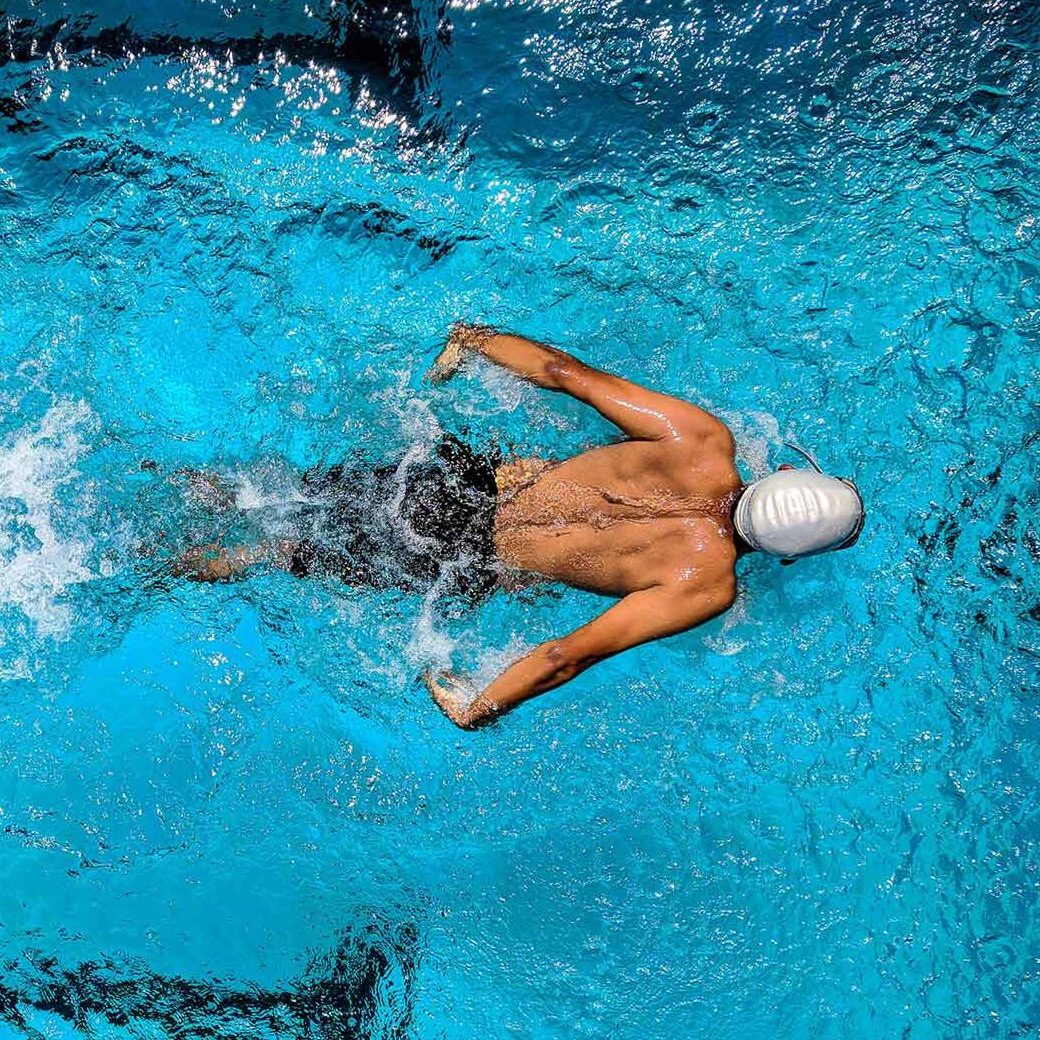Dolphin kick has completely transformed the sport of swimming becoming known as swimming’s fifth stroke. Dolphin kick is one of the best ways to improve overall race times and efficiency in the pool. Underwater dolphin kick allows swimmers to move faster than any surface stroke since there is less resistance underwater.
Dolphin kick is not recognised to generate speed but rather to delay the slowing down process from powerful starts and turns for as long as possible. To do this, swimmers need to work on achieving key factors:
- Tight streamlined body position
- Core engagement and controlled rhythm
- Undulation of the hips
- Developing flexibility through ankles to emphasise an up and down kick
Dolphin kick can be assisted with dryland training in addition to competent and consistent training within the pool. A misconception of dolphin kick is that the kicking motion is only about leg strength however as the undulation commences from the diaphragm, it creates a fluid wave going through the core, and increases in amplitude as it travels down to the toes. Dry land activities to increase range of movement, hip mobility and hip stability can include:
- Hip Flexor Stretch
- Burpee Spider Push Up
- Lateral Squat
Dolphin kick can be broken down in to two phases: downbeat phase and upbeat phase. An effective dolphin kick requires flexible ankles. This allows the top of the feet to be facing downward and backward instead of just downward during the downbeat. Consequently, water can be pushed backward in addition to downward, creating propulsion.
Downbeat Phase:
- The swimmer pushes their hips down, and the thighs follow along. Meanwhile, the knees flex, and the lower legs continue to travel up. The pressure of the water against the feet causes them to extend.
- The swimmer flexes their hips and continues to flex their knees. The lower legs continue to move up. This initiates the propulsive whip-like movement of the legs.
- The swimmer extends their knees, which causes the lower legs to move down quickly and forcefully, like cracking a whip.
- The downbeat ends when the legs are fully extended, and the feet are below the level of the body.
Upbeat Phase:
- At the end of the previous downbeat, the knees extend, and the lower legs and feet move down, pushing against the water. In reaction, the hips of the swimmer move up.
- Once the feet are below the level of the body, the swimmer uses the momentum of their hips moving up to initiate the upbeat. Simply extends their hips, and therefore, the thighs begin to move up.
- The downward pressure of the water against the lower legs causes the knees to extend. Furthermore, the feet assume a neutral position, partly flexed, and partly extended.
- The extended legs move up until the feet are above the level of the body. At that point, the next downbeat begins.
Activities to help learn to swim students understand/develop the movement:
- Standing upright, feet close together but not touching. Poke bottom out without leaning through chest, head & shoulders. Push bottom and hips through and out the front (can even be done with students standing a set distance away from a wall or surface to push hips/bottom towards). Exaggerate in this stage to develop hip undulation. (Describe it as poking your bottom out at your sibling!)
- Ask swimmers to swim like a mermaid, dolphin, or whale through the water. To continue concentrating on the hip movement, move into activities such as dolphin kick on their back as this will involve pushing the hips up out of the water and emphasises in/out up/down movement of the hips.
- Hands over the top of the board with head remaining out of the water. This engages the core and emphasises the swimmers to work on the core control and hip undulation to generate movement.
- Vertical kick. This is a harder skill for students where they are asked to kick in a vertical position to get their body out of the water. This emphasises on increasing the rate of the kick while holding core and undulation to raise the body out of the water. This skill can be performed with hands by the side or in a streamlined position.
To provide visuals for swimmers, YouTube videos of Michael Phelps and Ryan Lochte are very beneficial!
From Dylan Harris and HC Coaching Team
